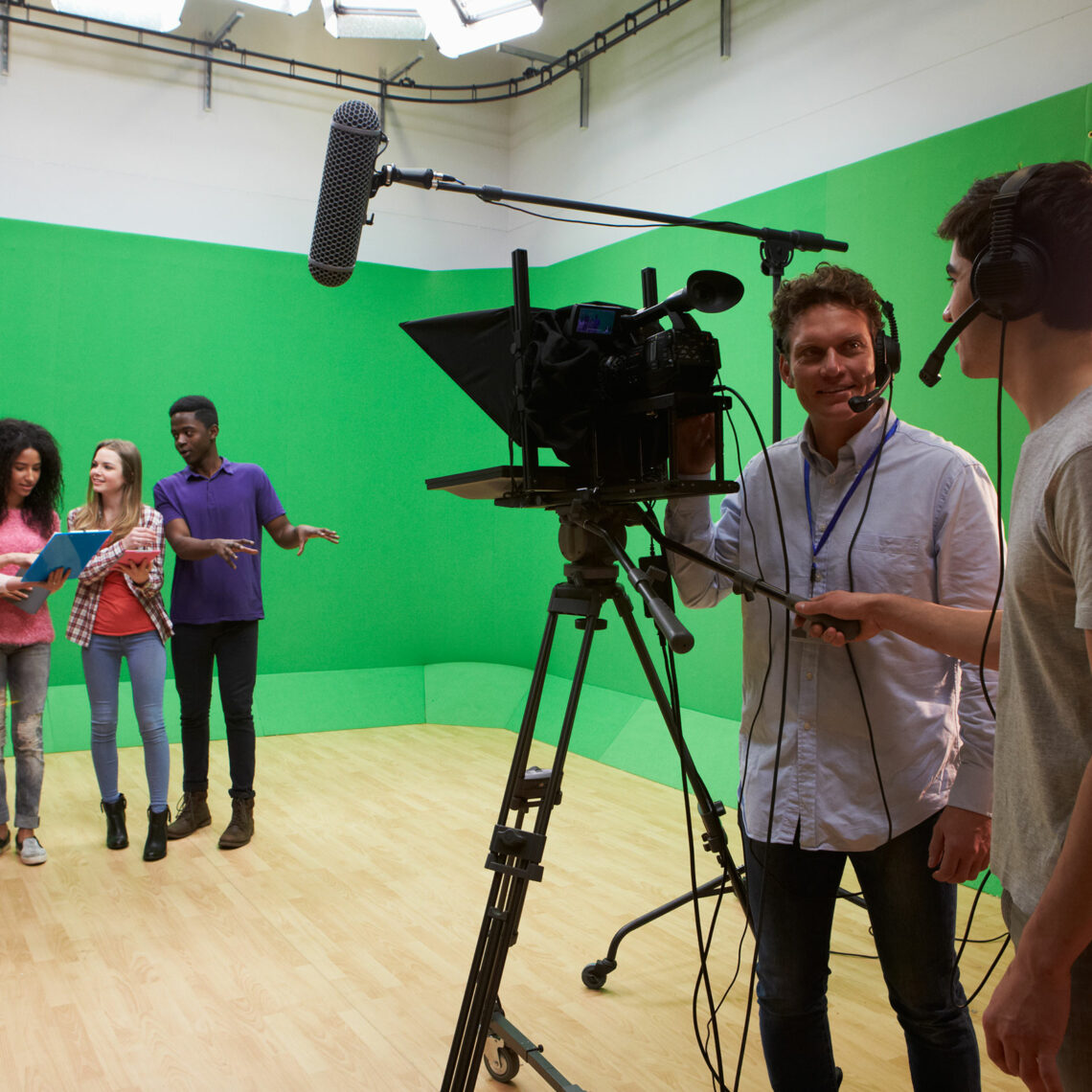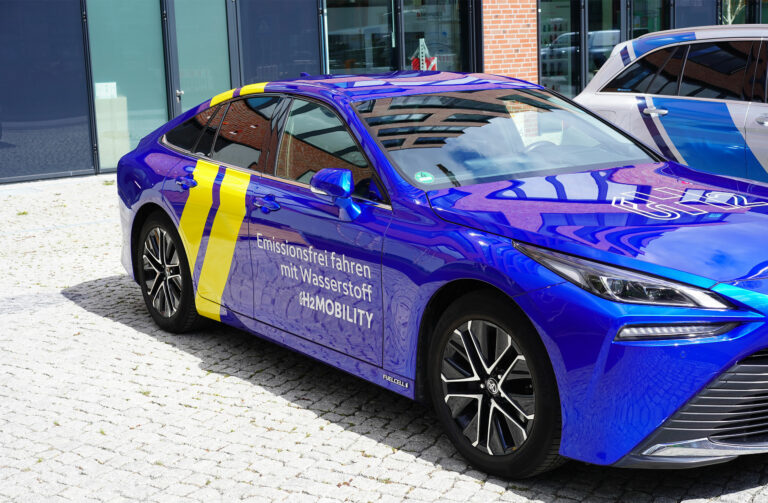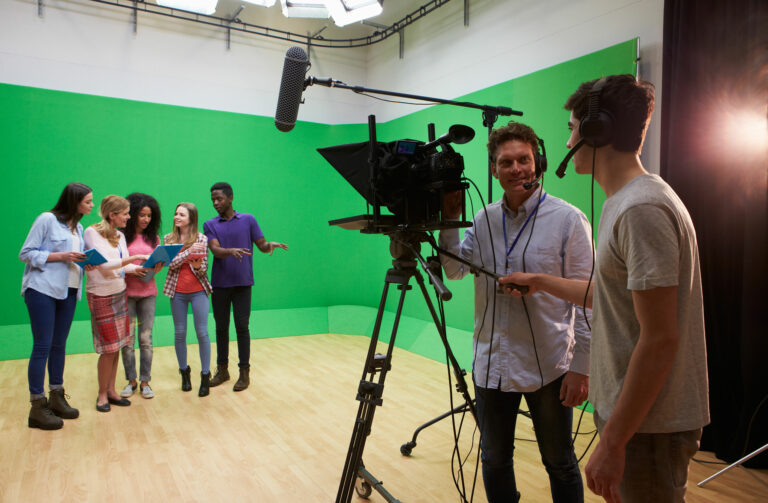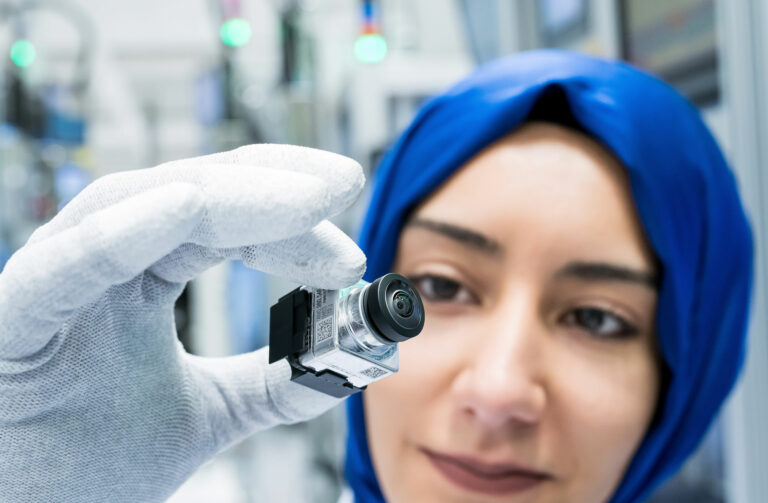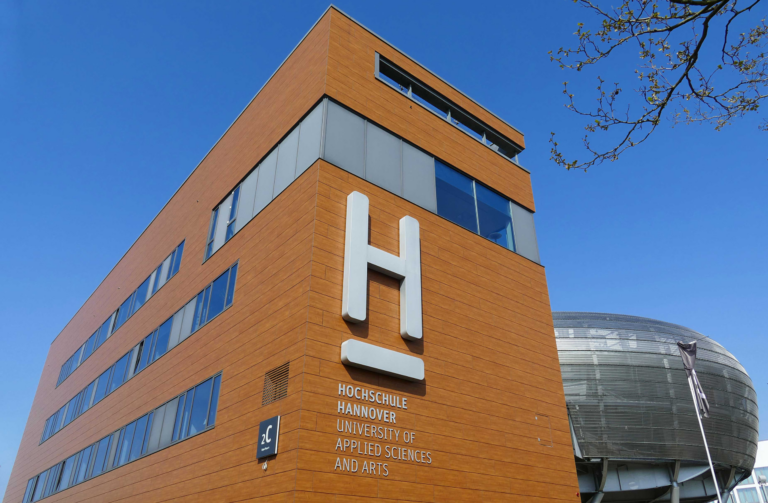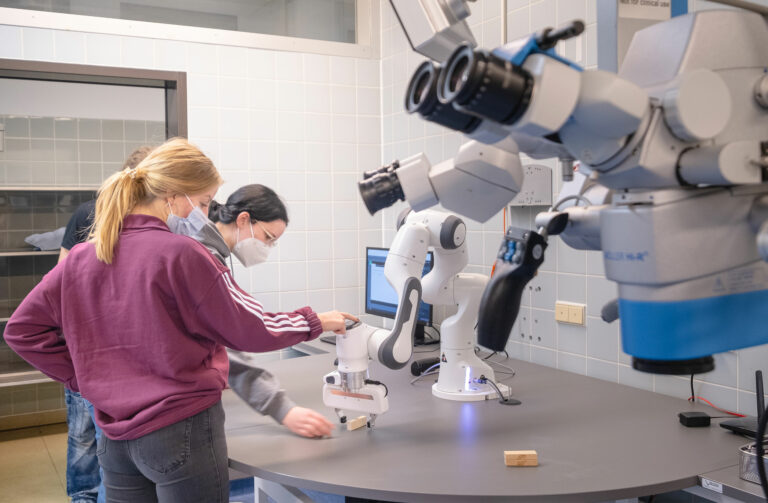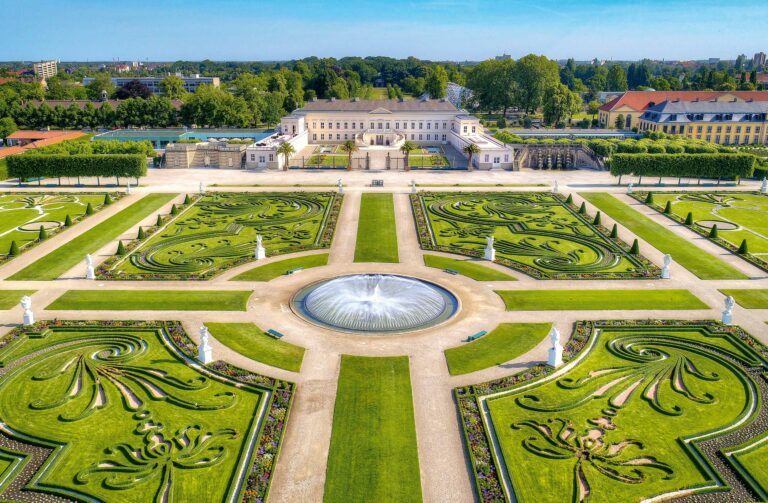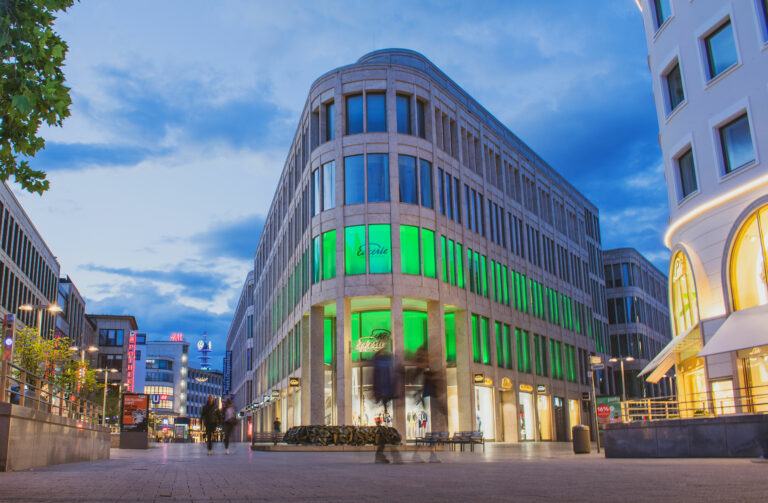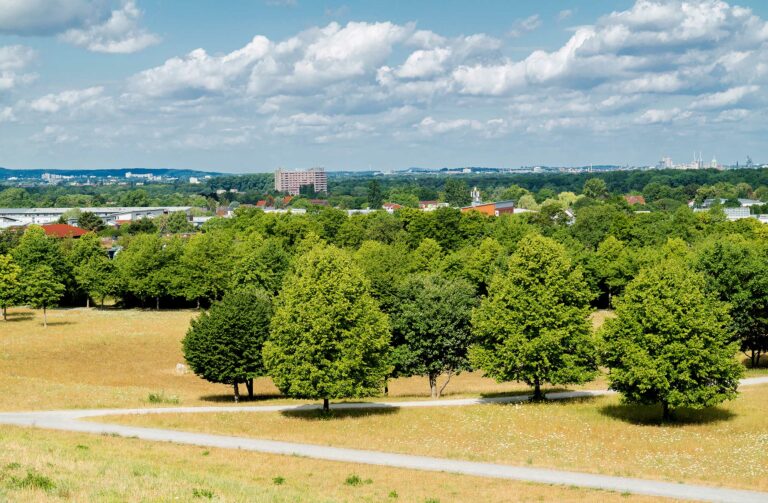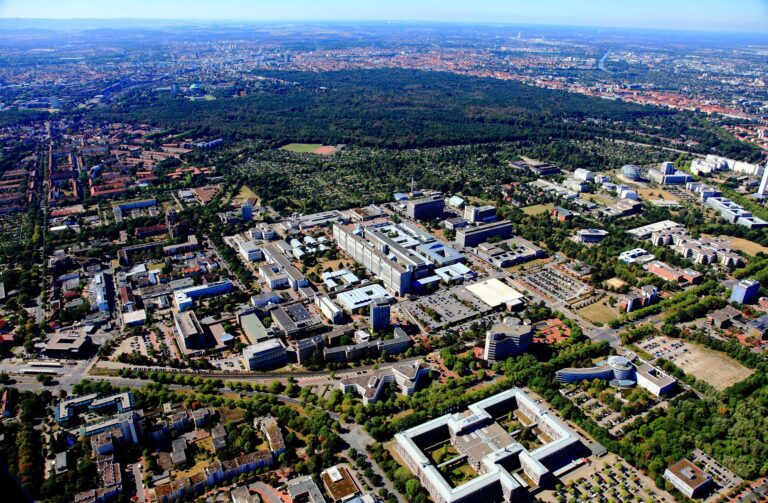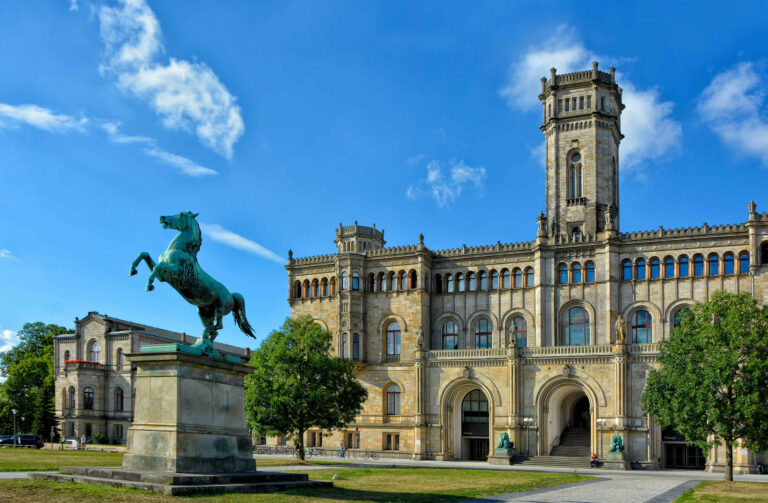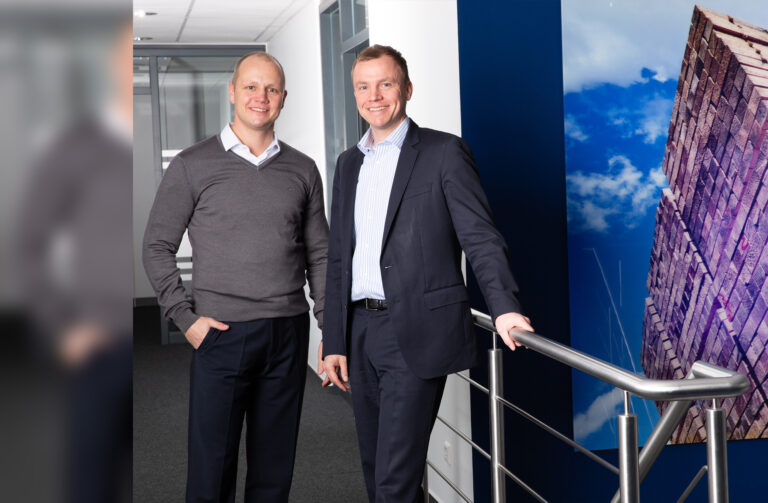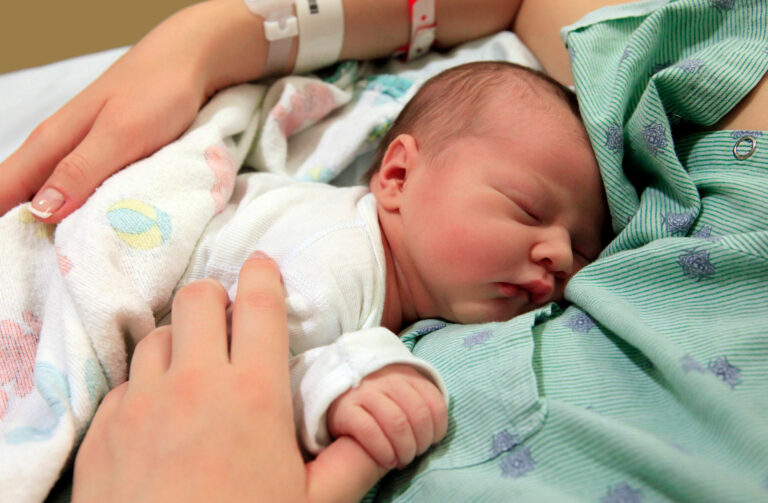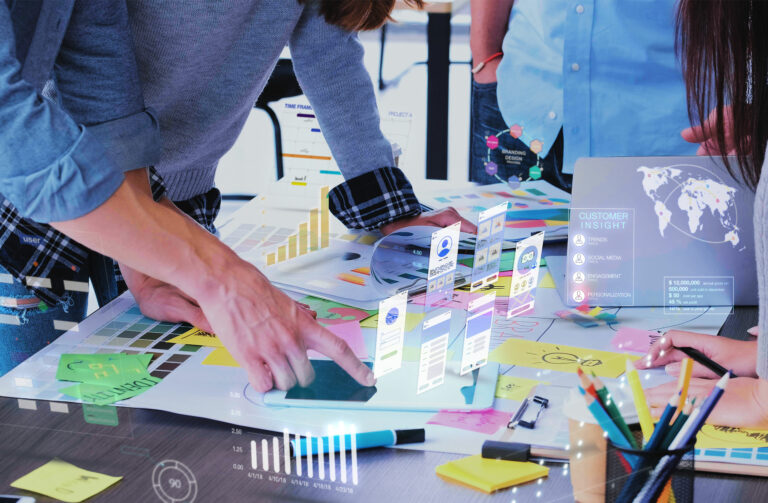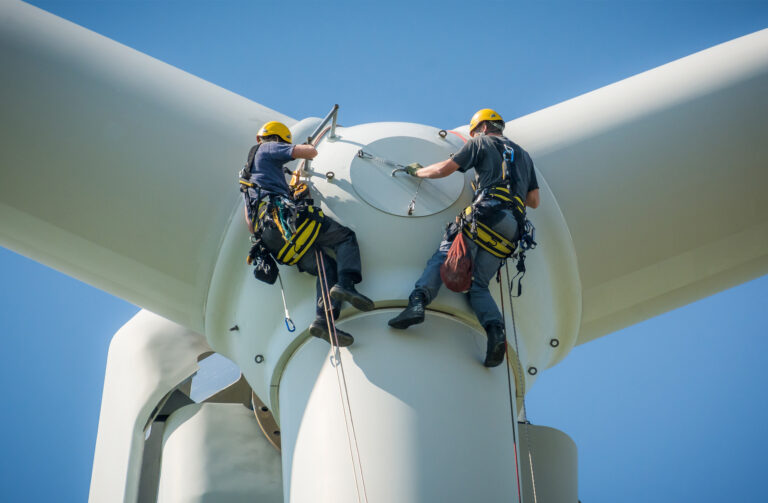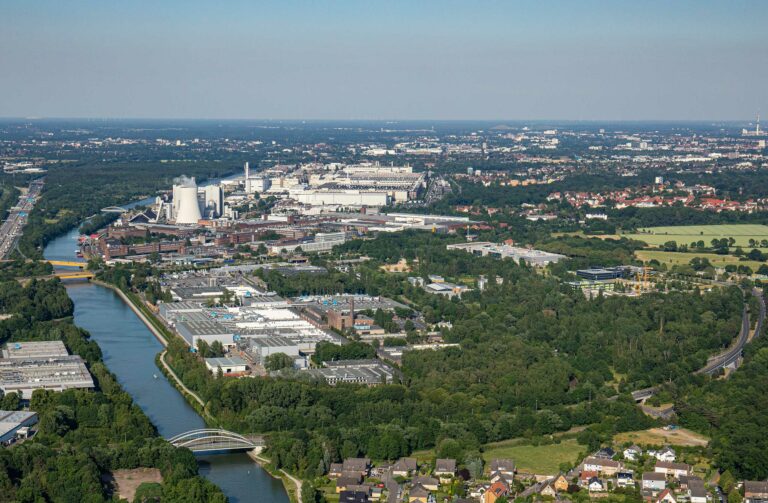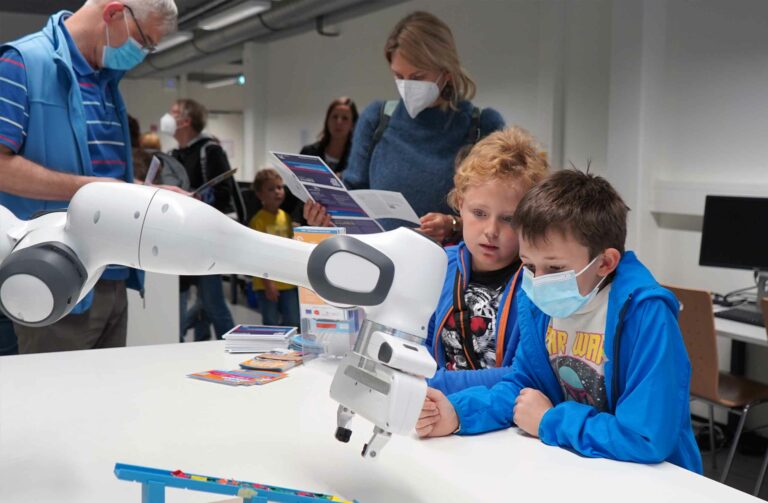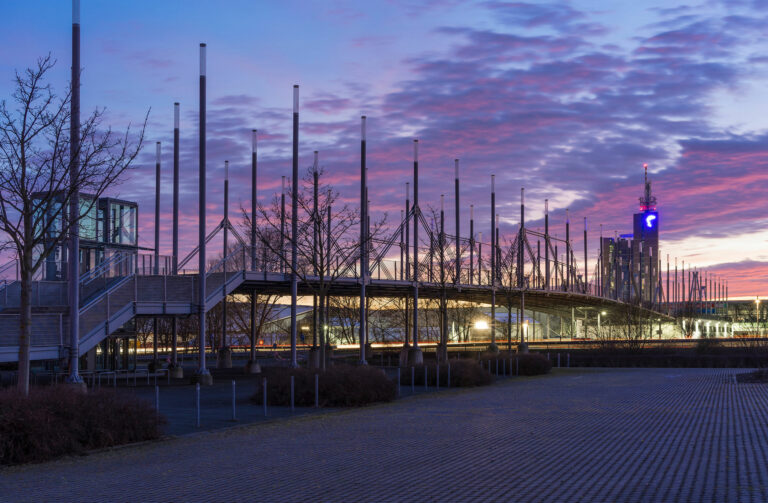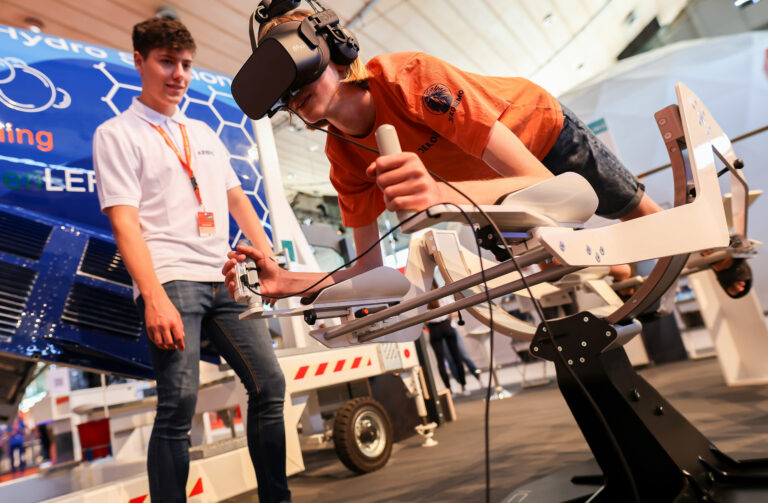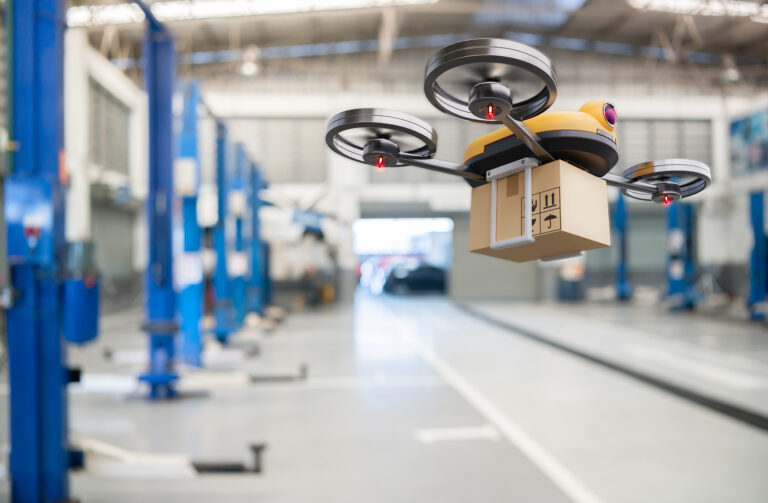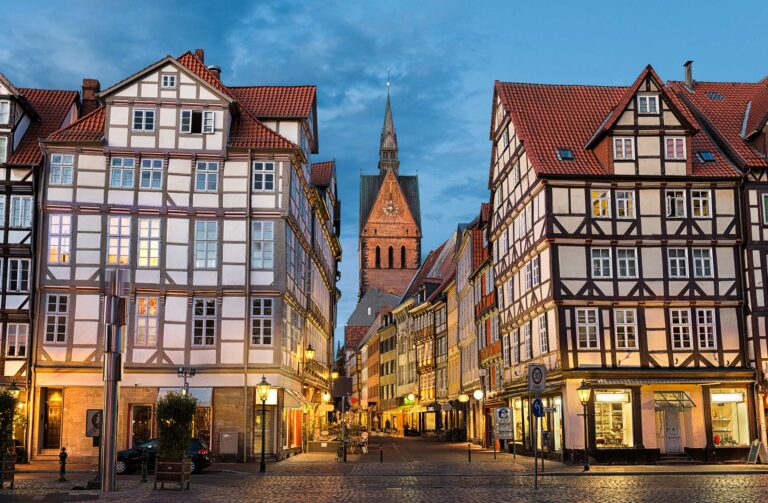A location with a special flair
The digital transition is successful here: the media sector shapes Hannover with innovations, diverse training opportunities and a broad range of funding. They have spent months doing research, writing, filming and editing. Now, at last, the big day has arrived for students on the Master’s degree course for television journalism and documentary films at Hannover University of Applied Sciences and Arts. The final films produced in the second and third semester are shown by the municipal cinema Hannover under the overall title “Neues von der Expo-Plaza“. The audience can look forward to documentaries, reports and features lasting 30 to 60 minutes.
Pioneer in Germany
Alongside engineering, business economics and social studies, Hannover University of Applied Sciences and Arts also offers several media and creative degree courses. There are 14 Bachelor’s degrees in design and media, information and communication, including photojournalism and documentary photography, journalism or public relations. All the courses are offered at the Expo-Plaza site.
The Master’s degree in television journalism has been available since 2008 and is the first of its kind in German-speaking countries. This two-year full-time course also makes the university a pioneer in Germany, as most degrees in journalism only offer this specialisation in the more advanced semesters. But in Hannover, the TV sector is part of the curriculum right from day one. Master’s degrees are also available in design and media, communications management and medical information management. Many of the films produced at the Faculty for Media, Information and Design can be downloaded online in the university’s media library on mediathek.f3.hs-hannover.de, where an impressive talent show awaits.
A partner for media professionals
Working under the motto of “promoting, networking and developing – let’s make ideas successful!”, Nordmedia – Film- und Mediengesellschaft Niedersachsen/Bremen is another company based at the Expo-Plaza. Since 2001, it has acted as the central media funding institution for shaping the expansion and development of the media industry in Lower Saxony and Bremen. In promoting the film and media industry, it funds various phases of film and television production together with interactive projects, as well as investment, qualification and consultancy, gaming promotion, training measures and festivals. The funds are provided by the states of Lower Saxony and Bremen together with the broadcasters NDR, Radio Bremen and ZDF, amounting on average to ten million Euros each year. Nordmedia also attends national and international trade fairs and festivals, such as those in Berlin or Cannes, where it focuses on cultivating trend-setting contacts with the regional media industry.
Nordmedia is also involved in technology-driven areas of development. One example of this is the APITs Lab, that gives companies access to the know-how of the gaming industry. APITs stands for Applied Interactive Technologies. These technologies can also be applied to many different applications and sectors.
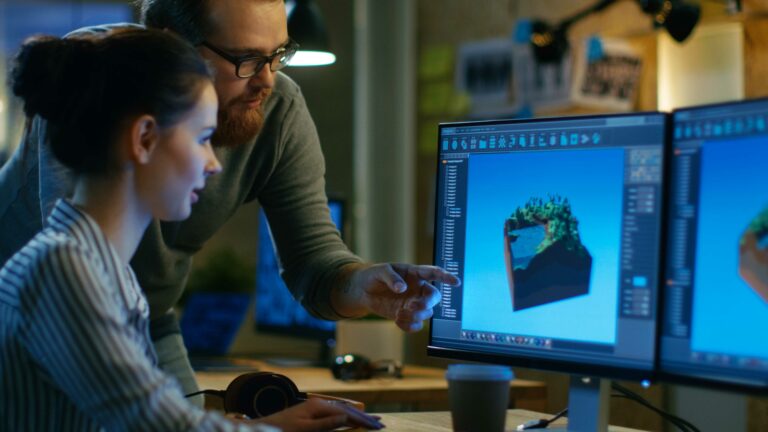
Hannover as gaming paradise
The Dreamhack trade fair gives a particularly impressive indication of the state of affairs in the gaming industry. The most important gaming and e-sports festival is hosted on Hannover exhibition grounds as the “gaming lifestyle experience and a huge gain for the state capital”, according to Hannover’s mayor Belit Onay. “As a venue, we are proud to be alongside global cities such as Dallas, Melbourne, Rotterdam and Madrid. This shows once more how diverse, versatile and attractive Hannover is. I am grateful for the great commitment shown by everyone involved in making Hannover successful in this respect, including Hannover Marketing- und Tourismus GmbH (HMTG), the City-Gemeinschaft Hannover and Deutsche Messe.“
Stepping stone for Oscars and Grammy awards
The renowned private academy SAE Creative Media Institute is another global player offering initial and further training, together with degree courses for jobs in the creative and media industry. SAE’s graduates include many Oscar and Grammy prize winners. The institute has been present in Hannover since 2017. As a network, it covers 28 countries on six continents with more than 54 institutes, and is part of AD Education. The sites outside Europe belong to the global education provider Navitas. The curriculum is geared to the requirements of the media industry, with the possibility of obtaining a Bachelor of Arts/Science degree after just two years. Various Master’s degree courses are then also possible. The Bachelor degrees are offered by the SAE Institute in cooperation with the University of Hertfordshire. Furthermore, posts-graduate courses are also possible in cooperation with Folkwang University Essen.
Another force to be reckoned with in Hannover consists of the public broadcasting companies with over 500 further training topics and more than 30,000 participants. The “ARD.ZDF medienakademie” is the largest education institution of its kind in German-speaking countries. It is a non-profit organisation and is open to all. The shareholders are the broadcasters of the ARD, the ZDF and Deutschlandradio.
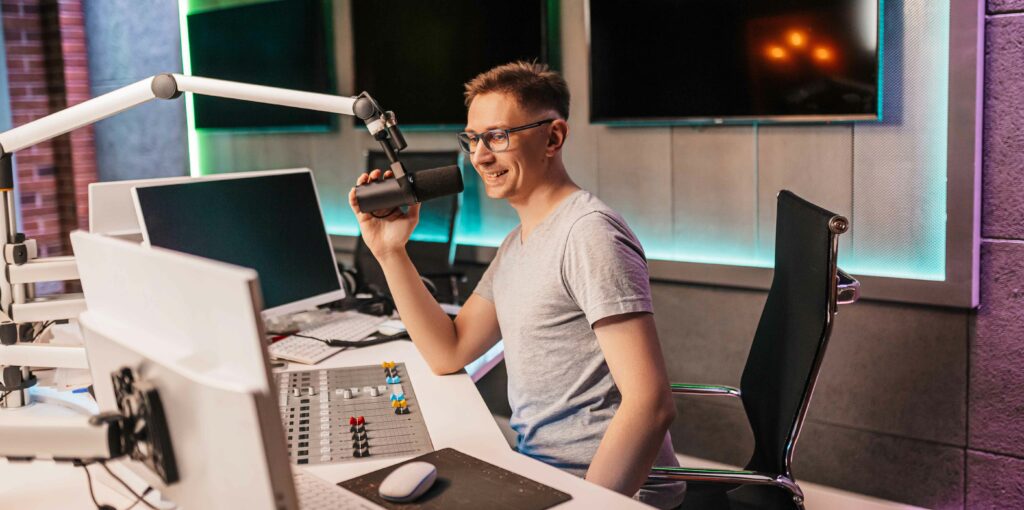
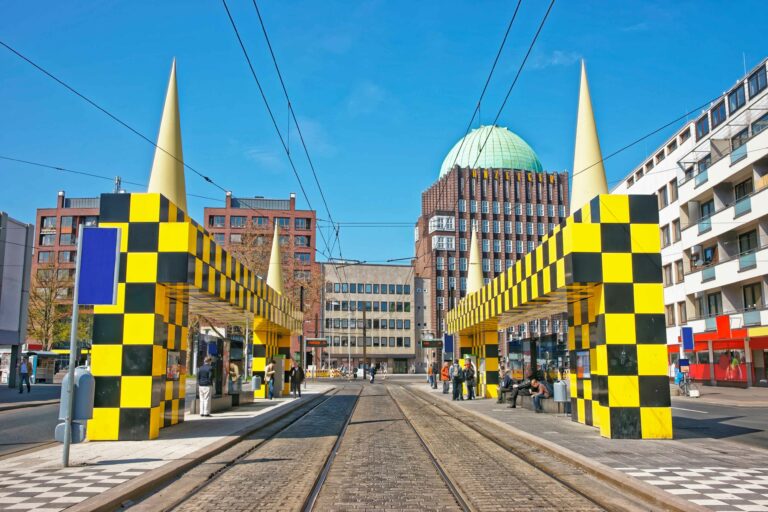
Media history below the copper dome
The building measuring 51 metres in height is more than just one of Hannover’s main landmarks: for nearly 100 years, the dark-red brick building with its striking white lattice windows and impressive copper dome has been symbolic for Hannover as a media location. Publisher August Madsack had the ten-storey building constructed between 1927 and 1928 – as the first skyscraper in the city and one of the first in Germany. The design by architect Fritz Höger is attributed to the Brick Expressionist style and is one of the few prestigious buildings in Hannover to survive the Second World War.
The offices underneath the twelve-metre-high dome used to belong to the Hannoverscher Anzeiger newspaper, the predecessor of the Hannoverschen Allgemeinen Zeitung (HAZ). This is also where the news magazine “Der Spiegel” was born in 1947. Today, the dome is home to Hochhaus-Lichtspiele, the highest cinema in the city.
The building is owned by the Madsack Mediengruppe, publisher of the major daily newspapers HAZ and Neue Presse. With the national news portal Redaktionsnetzwerk Deutschland (RND.de), Madsack has transitioned from being a traditional publisher to a digital journalism hub that provides regional and national content across all the platforms, in one of Europe’s largest newsrooms that covers 2,600 square metres. Around 180 journalists, marketing and digital experts work here on an interdisciplinary basis.
The Heise Gruppe and the long-standing Schlütersche Verlagsgesellschaft (founded 1747) also count among the big players in the publishing industry with a product range that includes directory media, content marketing and online offerings, as well as B2B and B2C solutions. Educational publishers such as the Westermann-Gruppe and Cornelsen operate media and information centres in Hannover.
Radio and television
It goes without saying that ARD and ZDF have their own regional studios in Hannover. Furthermore, TV channels Sat.1 and RTL broadcast regional programmes from Hannover. There are also the radio channels Antenne Niedersachsen, Radio ffn and Radio Hannover. Another major radio channel from the Region Hannover is Radio 21 in Garbsen. The Üstra transport service provider operates its own passenger television, broadcasting the latest news every day in the trams and at the stations.
The TVN Group, belonging to Madsack Mediengruppe, is a global player. Its core business consists of editorial and technical services for film, television and internet, the corporate media sector, virtual and augmented reality and 360-degree films. The TVN companies cover the entire production process, from the initial idea through to broadcasting. TVN also plays a major role in providing vocational training for the branch and offers many opportunities for the young talents from the Expo-Plaza.
Header picture: mikromonkey/stockAdobe.com

